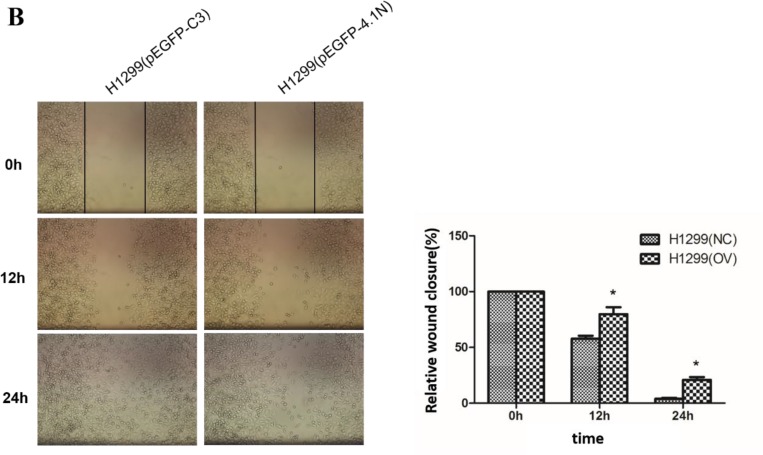Zi Wang
Zi Wang
1 The State Key Laboratory of Medical Genetics and School of Life Sciences, Central South University, Changsha, China
2 Department of Medicine, University of California, Irvine, CA, USA
1,2,#,
Bianyin Ma
Bianyin Ma
1 The State Key Laboratory of Medical Genetics and School of Life Sciences, Central South University, Changsha, China
1,#,
Hui Li
Hui Li
1 The State Key Laboratory of Medical Genetics and School of Life Sciences, Central South University, Changsha, China
1,#,
Xiaojuan Xiao
Xiaojuan Xiao
1 The State Key Laboratory of Medical Genetics and School of Life Sciences, Central South University, Changsha, China
1,#,
Weihua Zhou
Weihua Zhou
1 The State Key Laboratory of Medical Genetics and School of Life Sciences, Central South University, Changsha, China
3 Department of Biochemistry, College of Medicine, Jishou University, Jishou, China
1,3,
Feng Liu
Feng Liu
2 Department of Medicine, University of California, Irvine, CA, USA
2,
Bin Zhang
Bin Zhang
4 Department of Histology and Embryology, Xiangya School of Medicine, Central South University, Changsha, China
4,
Min Zhu
Min Zhu
1 The State Key Laboratory of Medical Genetics and School of Life Sciences, Central South University, Changsha, China
1,
Qin Yang
Qin Yang
1 The State Key Laboratory of Medical Genetics and School of Life Sciences, Central South University, Changsha, China
1,
Yayue Zeng
Yayue Zeng
1 The State Key Laboratory of Medical Genetics and School of Life Sciences, Central South University, Changsha, China
1,
Yang Sun
Yang Sun
5 Molecular Science and Biomedicine Laboratory, State Key Laboratory for Chemo/Biosensing and Chemometrics, College of Biology, College of Chemistry and Chemical Engineering, Collaborative Innovation Center for Chemistry and Molecular Medicine, Hunan University, Changsha, China
5,
Shuming Sun
Shuming Sun
1 The State Key Laboratory of Medical Genetics and School of Life Sciences, Central South University, Changsha, China
1,
Yanpeng Wang
Yanpeng Wang
1 The State Key Laboratory of Medical Genetics and School of Life Sciences, Central South University, Changsha, China
1,
Yibin Zhang
Yibin Zhang
1 The State Key Laboratory of Medical Genetics and School of Life Sciences, Central South University, Changsha, China
1,
Haibo Weng
Haibo Weng
6 College of Life Sciences, Zhengzhou University, Zhengzhou, China
6,
Lixiang Chen
Lixiang Chen
6 College of Life Sciences, Zhengzhou University, Zhengzhou, China
6,
Mao Ye
Mao Ye
5 Molecular Science and Biomedicine Laboratory, State Key Laboratory for Chemo/Biosensing and Chemometrics, College of Biology, College of Chemistry and Chemical Engineering, Collaborative Innovation Center for Chemistry and Molecular Medicine, Hunan University, Changsha, China
5,✉,
Xiuli An
Xiuli An
6 College of Life Sciences, Zhengzhou University, Zhengzhou, China
7 Laboratory of Membrane Biology, New York Blood Center, New York, NY, USA
6,7,✉,
Jing Liu
Jing Liu
1 The State Key Laboratory of Medical Genetics and School of Life Sciences, Central South University, Changsha, China
1,✉
1 The State Key Laboratory of Medical Genetics and School of Life Sciences, Central South University, Changsha, China
2 Department of Medicine, University of California, Irvine, CA, USA
3 Department of Biochemistry, College of Medicine, Jishou University, Jishou, China
4 Department of Histology and Embryology, Xiangya School of Medicine, Central South University, Changsha, China
5 Molecular Science and Biomedicine Laboratory, State Key Laboratory for Chemo/Biosensing and Chemometrics, College of Biology, College of Chemistry and Chemical Engineering, Collaborative Innovation Center for Chemistry and Molecular Medicine, Hunan University, Changsha, China
6 College of Life Sciences, Zhengzhou University, Zhengzhou, China
7 Laboratory of Membrane Biology, New York Blood Center, New York, NY, USA
✉Correspondence to: Jing Liu, liujing2@sklmg.edu.cn, jingliucsu@hotmail.com
✉Xiuli An, xan@nybloodcenter.org
✉Mao Ye, yemaocsu@hotmail.com
Collection date 2019 Oct 22.
Copyright: © 2019 Wang et al.
This is an open-access article distributed under the terms of the Creative Commons Attribution License 3.0 (CC BY 3.0), which permits unrestricted use, distribution, and reproduction in any medium, provided the original author and source are credited.



